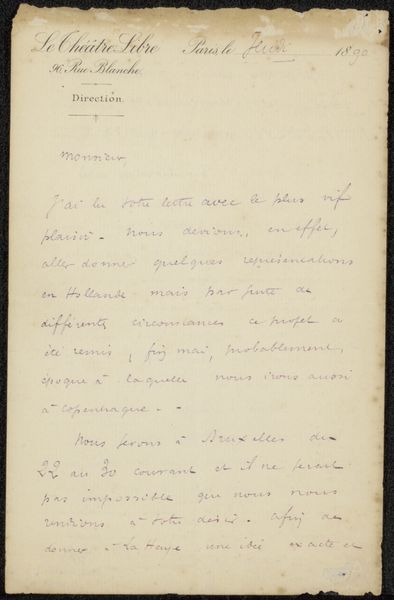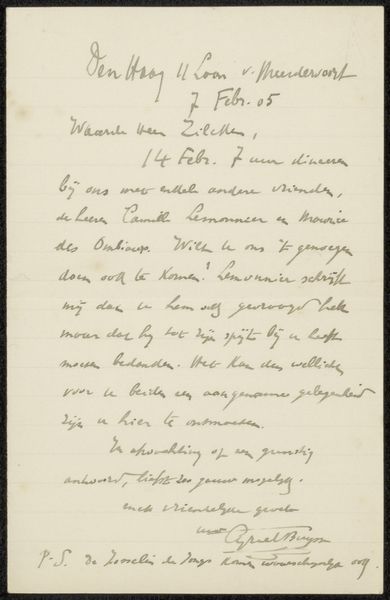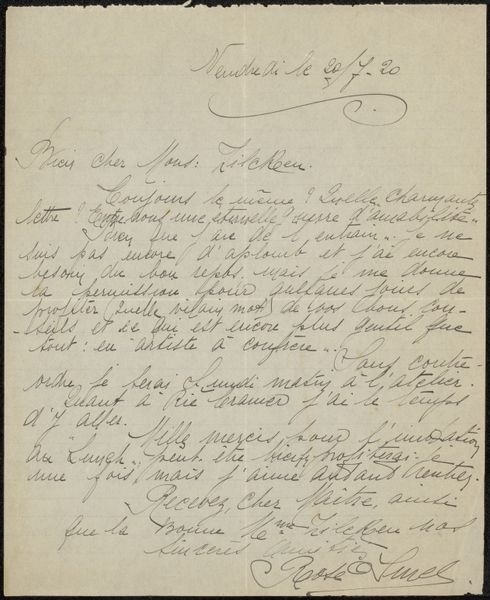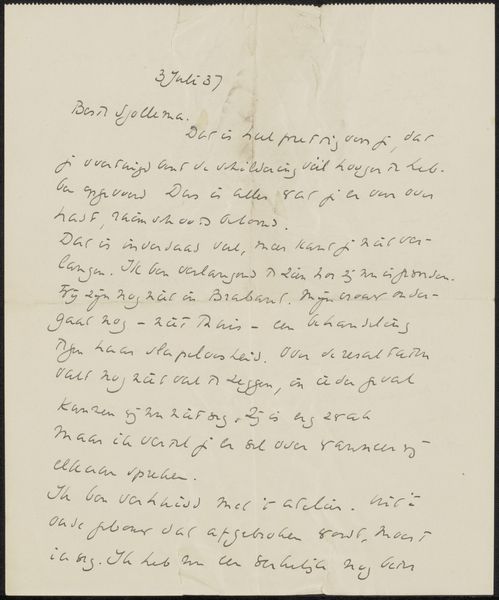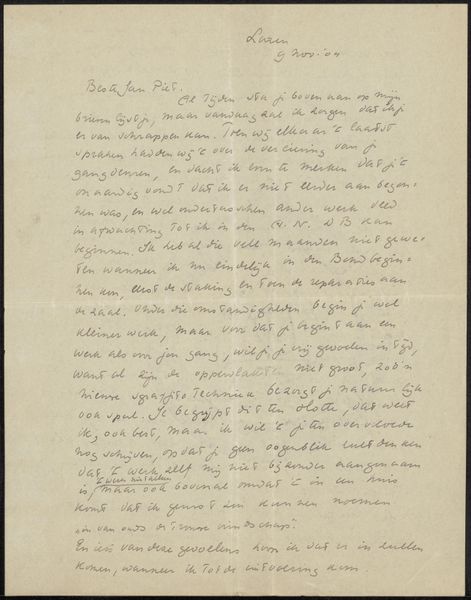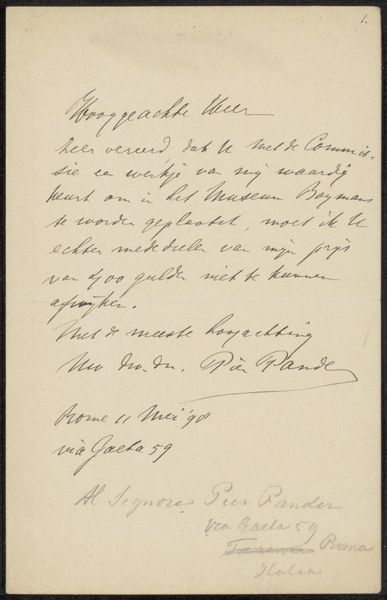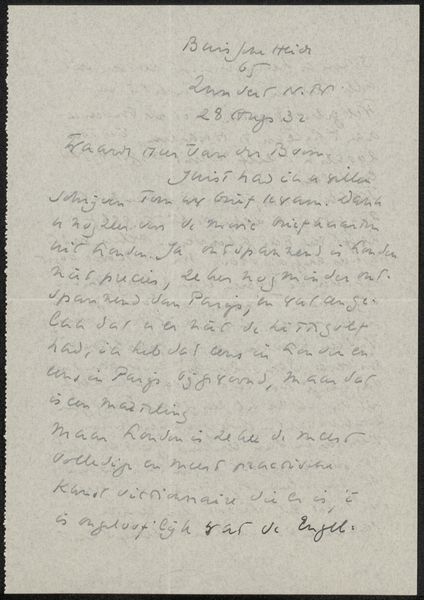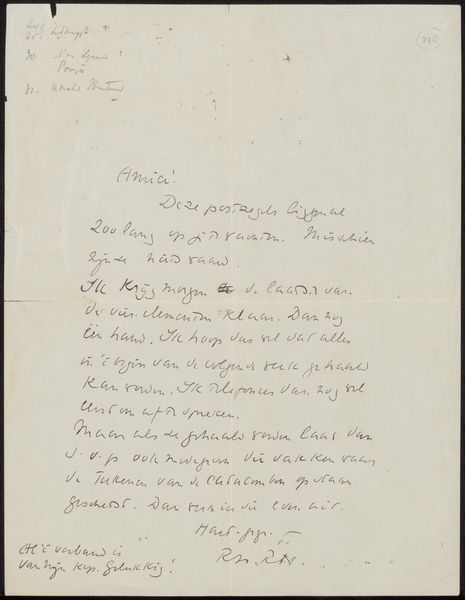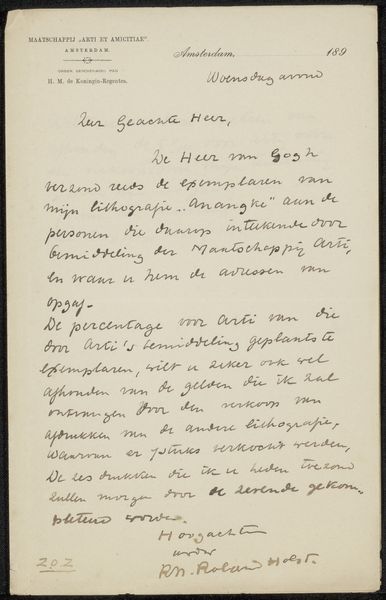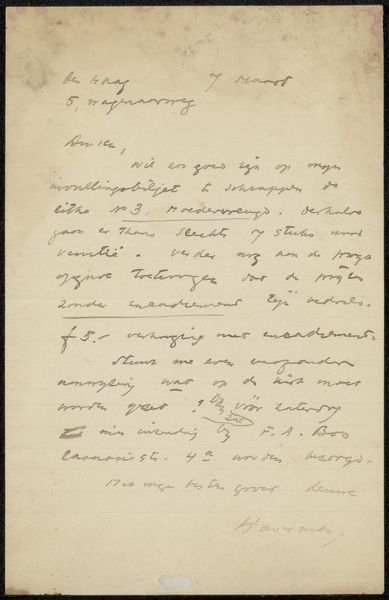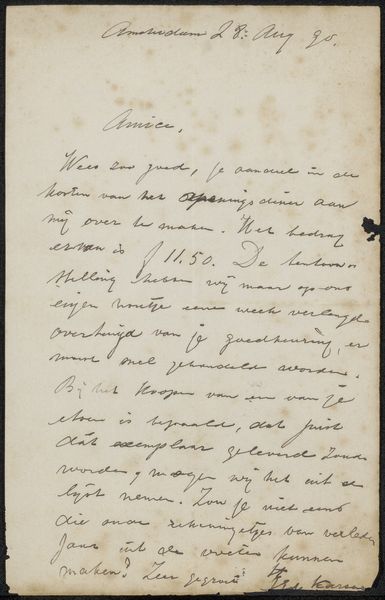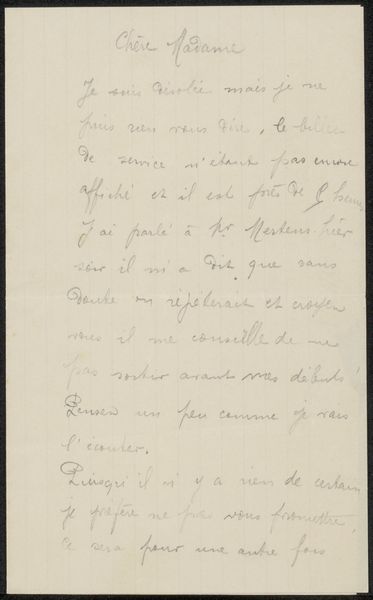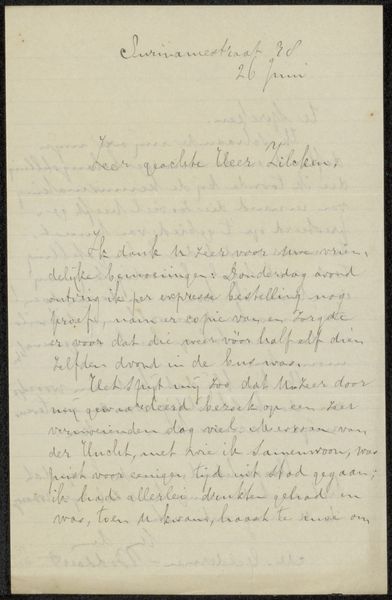
drawing, paper, ink, pen
#
portrait
#
drawing
#
hand-lettering
#
sketch book
#
hand drawn type
#
paper
#
personal sketchbook
#
ink
#
hand-drawn typeface
#
pen-ink sketch
#
pen work
#
sketchbook drawing
#
pen
#
storyboard and sketchbook work
#
sketchbook art
#
modernism
Copyright: Rijks Museum: Open Domain
Curator: Here we have "Brief aan Jan Veth," or "Letter to Jan Veth," a modernist piece believed to have been crafted sometime between 1907 and 1917 by Karel Johan Lodewijk Alberdingk Thijm. It's rendered in ink on paper, showcasing delicate pen work. Editor: It feels intensely personal, like an unfiltered thought captured directly from the artist’s mind. The handwriting gives it an intimacy that's immediately compelling. Curator: Precisely. Letters like these were important intellectual currency at the time. This kind of exchange allowed for debate and negotiation about social and cultural events, or in some cases, personal matters between writers, artists, and critics like Jan Veth. We might consider this artifact to represent intellectual life in the early 20th Century. Editor: Absolutely. There's also something quite subversive in the casual nature of the piece. This is modernism stripped bare of the grandstanding we often associate with manifestos. The focus isn't on declaring some grandiose artistic agenda but on everyday exchanges that defined modern movements at the time. I find it telling how the author addresses his correspondent as “Amice” at the top of the letter; it indicates a warm and personable sentiment. Curator: Yes, letters were key elements in how modernist thinking was negotiated and formalized into larger social movements and intellectual traditions. What seems on the surface like a quick sketch carries an entire network within it. Consider how handwritten documents become records within social and political theories. Editor: Exactly. This piece is like a portal into that intellectual sphere. We might examine how this single sheet contributed to the formation and articulation of social and intellectual movements, especially in the context of early twentieth-century debates on modern art and literature. What's captured here becomes something much bigger, both then and for us now as viewers. Curator: Indeed. We can also see how an informal piece contributes to a writer's profile over time. Ephemera become documents. They shape art history through public display. Editor: It shows us the human connections driving innovation and change, allowing for re-interpretation through our contemporary lenses, as we attempt to examine it from a point of view rooted in today’s pressing issues surrounding identity and social justice. It shows how we were then, how far we’ve come, and how we’re still very much the same.
Comments
No comments
Be the first to comment and join the conversation on the ultimate creative platform.
